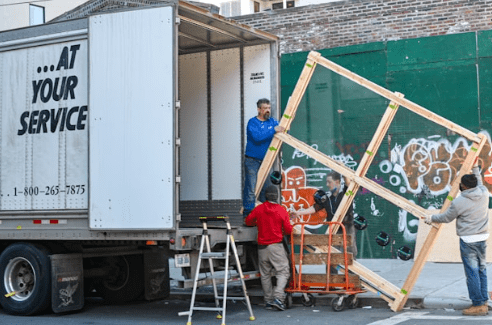
Photo by Robinson Greig on Unsplash
Long-distance relocations bring distinct complications that short-distance moves don’t encounter. The longer duration, complex coordination, and elevated risks require thorough planning to prevent expensive mistakes. Numerous individuals misjudge how intricate interstate or international moves can be, resulting in anxiety, unforeseen costs, and broken items.
Lacking adequate preparation and knowledge of common problems, an anticipated new beginning can rapidly transform into a chaotic ordeal. Here are common mistakes during a long-distance move.
Inadequate Research on Moving Companies
The most common error people commit is engaging the first moving company they discover or selecting one based exclusively on cost. Long-distance relocations demand specialized knowledge, appropriate licensing, and insurance protection that many companies lack.
Legitimate interstate movers must possess a USDOT number issued by the Federal Motor Carrier Safety Administration. Companies without this credential function illegally and provide no safeguards if problems arise.
Dishonest movers offer artificially low estimates by phone, then hold possessions hostage, demanding additional payments upon delivery. Investigate potential movers carefully by verifying their USDOT numbers, examining reviews across multiple platforms, and confirming their physical business location. Obtain in-home estimates from at least three companies and be suspicious of unrealistically affordable quotes.
Poor Timing and Scheduling
Another critical error involves inadequate timing coordination. Long-distance moves require precise scheduling because delays create cascading problems. Many people fail to account for the time needed to transfer utilities, update addresses with banks and employers, or coordinate school transfers for children.
Peak moving season runs from May through September, when demand is highest and prices increase significantly. Booking during off-peak months can save thousands of dollars while ensuring better availability of quality movers. Mid-month and mid-week moves typically cost less than beginning or end-of-month relocations when most leases expire.
Insufficient Planning for Storage Solutions
Long-distance relocations frequently include temporary housing arrangements or postponed move-in dates at the destination. Many people discover they require storage options too late, but haven’t investigated solutions in their new location. Long distance moving containers offer adaptability by enabling you to pack according to your schedule while providing storage at the origin, destination, or both places until you’re prepared for delivery.
Conventional storage units require several loading and unloading trips, generating extra labor and costs. Portable storage containers remove this inconvenience by delivering the storage directly to your address, then transporting it to your new city, where it can be brought to your new residence or kept at a facility until required.
Underestimating Costs and Hidden Fees
Financial miscalculations affect many long-distance relocations. Besides the primary transportation charge, various supplementary expenses accumulate rapidly. Packing supplies, enhanced insurance coverage, temporary accommodations, food during transit, and utility setup fees collectively increase costs. Many moving companies impose surcharges for stairs, extended carrying distances from the truck to your entrance, or large items.
Develop a thorough budget incorporating a 20% cushion for unforeseen expenditures. Obtain comprehensive written estimates that detail all potential additional charges. Recognizing the distinction between binding and non-binding estimates helps avoid moving day surprises. Binding estimates guarantee the final cost, whereas non-binding estimates may increase if your shipment exceeds the projected weight.
Neglecting Important Documentation
The last significant error concerns insufficient record management and documentation. Cross-country relocations produce substantial paperwork, including agreements, inventory catalogs, insurance documentation, and receipts. Many individuals misplace these documents, complicating the submission of claims for damaged possessions or settling billing disagreements.
Establish a specific moving file containing all relevant documents. Photograph valuable items before packing and maintain comprehensive inventory lists. Preserve receipts for all moving-related expenditures, as many qualify for tax deductions. Document any pre-existing damage to furniture or walls at departure and arrival properties to prevent disputes regarding security deposits.
Endnote
Long-distance moving success depends on thorough preparation, careful research, and realistic expectations. Avoiding these common mistakes protects your belongings, budget, and sanity during an already stressful life transition.



